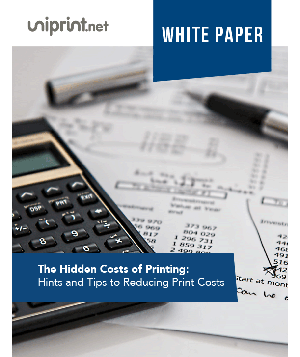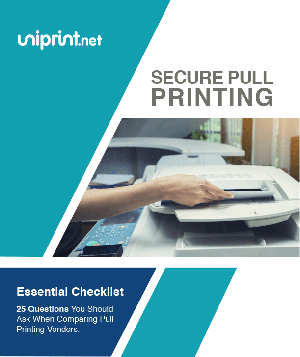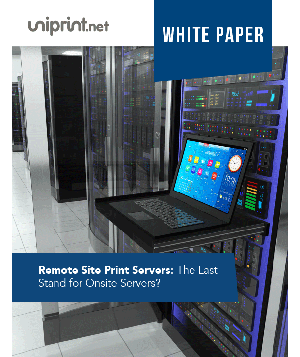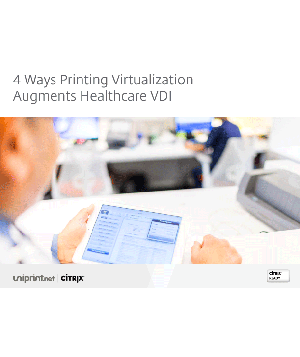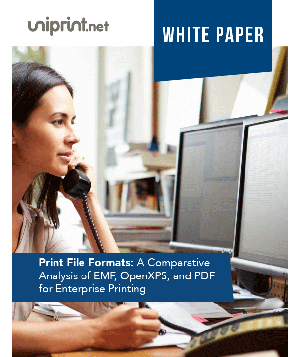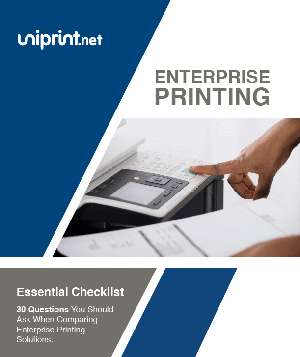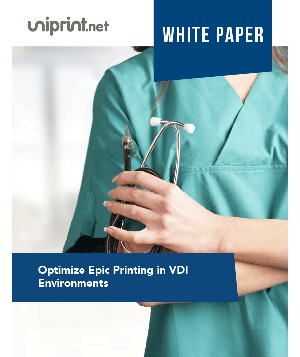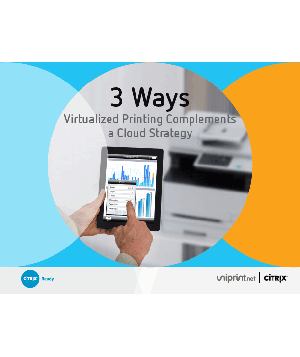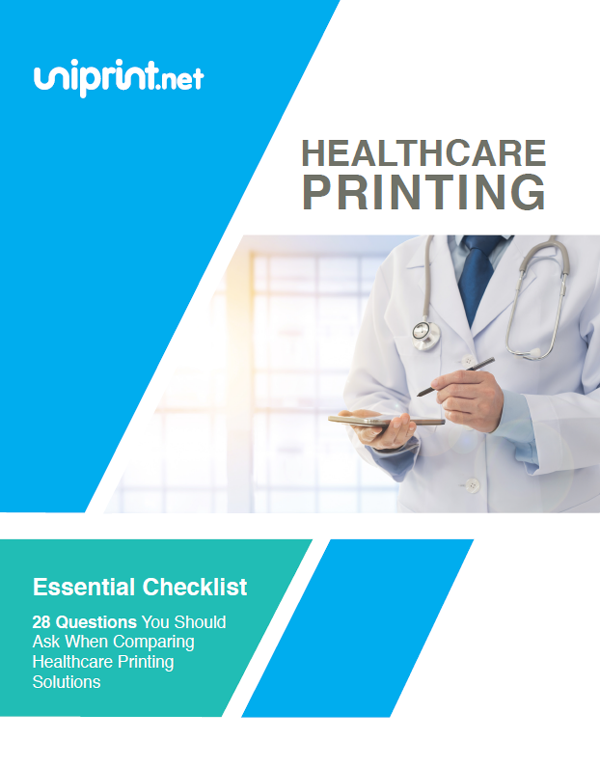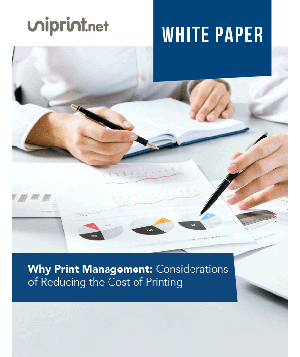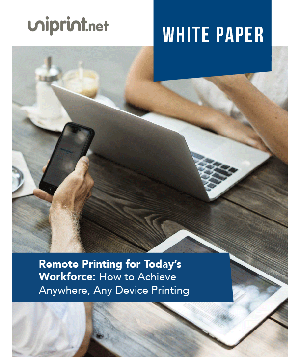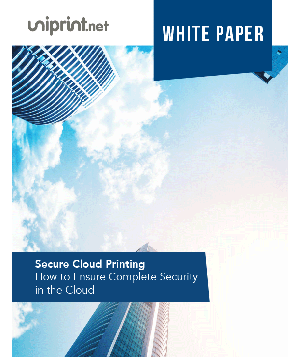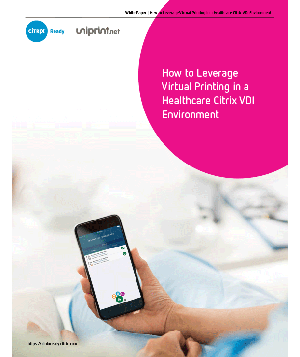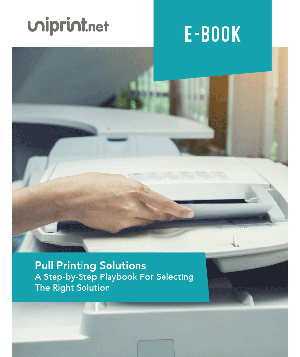User Stories: Lead Solutions Architect at ARC Improves IT Workflow
What is your job role and your responsibilities at the American Red Cross?
My name is Adam Flowers, and I am a lead solutions architect here at the American Red Cross. The team that I am on is called End User Technologies Solutions, which is the architect or engineering level for the EUS group which is desktop support or service desk support.
Being on the IT team, I am tasked with IT support for a multitude of different organizations and end user classifications. I support full-time employees, part-time employees, and the volunteer staff as well.
Can you describe your IT printing environment?
Our IT platform consists of a mix of virtual and physical desktops running in VWware Horizon view environment.
Most of our IT workforce does work from home. Having so many organizations under the Red Cross umbrella, of course the humanitarian aid or donor, they’re not at facilities. They’re at chapters or sites across the nation, and then other pockets can work from home.
In total, we have over 306 plus remote locations.
No matter whether our staff are on-site at a chapter, at a disaster or working from home, they need to be able to access their data, their resources, the applications that are needed to perform their job, so the mix of set-ups or configurations that we deal with is very diverse.
What types of print-related issues and challenges were you facing in your specific role?
We have such a diverse printing environment – so many different printer models, many different set-ups, and of course we had home users that had wireless printers in their homes or USB attached printers out there.
But one thing that we had seen before is print driver compatibility problems. Getting print drivers into the virtual environment for those printers to be functional was always a challenge. We couldn’t support hundreds or thousands of different models that we had in our environment and combat a compatibility issue.
We knew that we needed to have a secure printing solution that used a print driver redirection technology or used a universal print driver that was compatible across the board with various printer models and types.
What were the requirements you were looking for?
In general, we had quite a few requirements in look for a printing solution.
- Eliminate print servers
- Have a self-service portal for end-users to be able to add in the printers that they wanted
- Automated print object delivery model
- Print driver management
- Print queue or spooler management
- Secure pull print solution
In performance and reliability, we wanted:
- High availability solution
- Redundancy
- Bandwidth optimization
- Gateway printing solution that was mainly for their own on-network, off-network piece
- Support office-based workers in an own-network chapter, whether they’re using an ARC own device or their version of BYOD
- Support office workers that were in remote offices, so those off-network locations with the same type of devices either an ARC own-device or a BYOD
- Support teleworkers, connected in office or an off-network office or working from home or at a disaster location
Interested in finding out more about how to consolidate print servers into the data center? Check out this free whitepaper on remote site print servers!
From your point of view, how has UniPrint Infinity helped solve your issues? What UniPrint Infinity features stand out?
The UniPrint solution is allowing us to adapt to whatever situation our people may be in.
Whether they’re at a location that has network printers that we can map through the PrintPAL solution, whether they use the virtual workplace solution or not, or whether they’re using the virtual workplace solution and need to print to a locally attached printer or a network printer, there are no limitations with the UniPrint product that makes us say, “Hey we can’t handle this”.
Having the UniPrint solution in place has allowed us not to worry about a hindrance of that solution. There’s nothing that we’ve been asked to do or asked implement that the UniPrint solution can’t handle.
The features that stood out the most were the PDF-based universal printer driver, single virtual print queue and one management console to manage the printers.
What is your overall experience working with UniPrint?
Overall I think the UniPrint product is a great product!
With some other solutions, you didn’t have that flexibility, you didn’t have that capability or opportunity to do some things but with the work of the UniPrint implementation team and their overall design we can easily adapt and move things around.
We also enjoyed working the support team – they have been delightful to work with and we like the way they have their team set-up.
We can reach out to our main support team anytime and they can basically turn their chair around and ask their development team a question and they can work on resolving an issue or creating a feature they can put in place or can work on right then and there.
With UniPrint we just ask, “Hey do you think this could work?”
It’s not like a customer-vendor or customer-end-user relationship only.
It feels like a partnership between us two. They are constantly trying to make the product better and make our implementation work at the same time!
Try UniPrint InfinityCloud
Whether you are printing at the office or at home, UniPrint InfinityCloud is the cloud printing solution of choice for your organization.
Recent Posts
- How Cloud Print Management Prevents Print Server Vulnerabilities
- Is Printing Dead?
- How InfinityCloud Outshines Microsoft Universal Print in 2024
- How the Cloud Print Management Software Drives Sustainable Business Practices
- How Cloud Print Management Enhances Your Network Security
- How to Enhance Remote Work Experience with Secure Serverless Printing
- Update to Google Drive Cloud Storage
- A Guide to Preventing Phishing Attacks
- Level up your Microsoft Universal Printing experience with PF 360 Print
- How To Fix 10 Common Printer Problems
- See All


